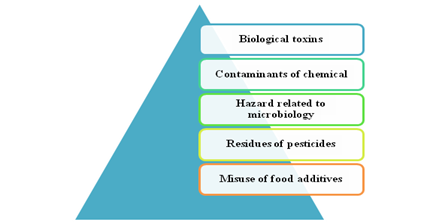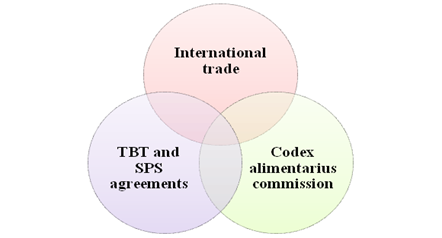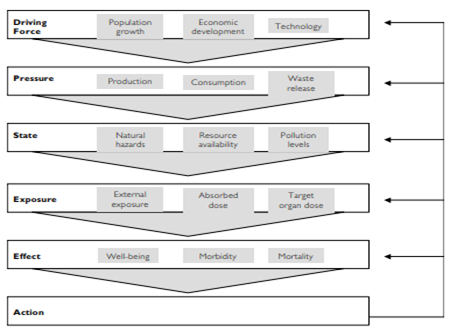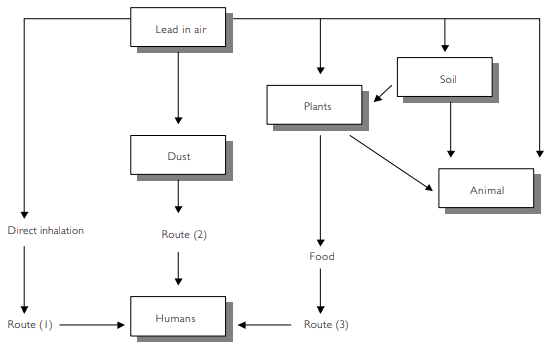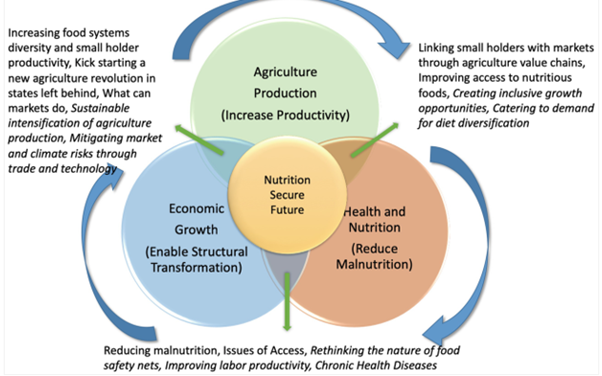Executive summary
Food safety and security are really measured for managing environmental and global health issues. The study is mainly based on the global and environmental health issues in Brisbane, Australia. Besides, different policies, governmental rules, and regulations, and political as well as economic factors are involved in this study. Legislation along with the act “food safety requirements of the imported food control act 1992 (under the biosecurity Act 2015)” is analysed through this study. Alongside, a DPSEEA framework is developed for better understanding and identifying social, economic, and environmental factors related to public health issues. Besides, several factors are noted within this particular framework and these focus on the trade, transportation, import, and export systems of the Australian. The inflation rate, GDP, and condition of employability are also discussed in this report. Thus, food safety and security in Brisbane and its recommended strategies related to public health must be ensured by every nation over the world for mitigating health issues and disease in this regard.
1. Introduction
The most common issues and problems in the worldwide are environmental and global issues that include several factors like air pollution, climate change, chemical pollution, disease-causing microbes, and many more. The study is mainly focused on the environmental and global health issues in Brisbane, Australia. Besides, the factors related to health issues and environmental activities in this regard, different legislation for the local and national health care, and DPSEEA frameworks are going to be discussed in an appropriate manner in this study. Brisbane is a region of Australia that faces many problems and issues regarding environmental and global health and that are mainly responsible for less “food security and safety”.
2. Examine environmental factors from the local to the global levels that influence health and interpret the relevance to the health of populations
In order to analyse and identify the environmental factors in the particular region in Australia, food security and safety are chosen for analysing carefully and that can manage the healthy population and its interaction with global factors. Besides, the term food safety refers to many hazards like acute or chronic that can affect consumer health and food injurious. Quality of food indicates many attributes that mainly influence a products’ value for the consumer (Jennings et al., 2016). Apart from this, as argued by Lu et al. (2015), some positive attributes are also there such as flavour, colour, texture, processing, and origin. This major distinction is between quality and safety to public policy as well as the system related to food control and nature for meeting predetermined objectives within this particular nation.
According to “food safety requirements of the imported food control act 1992 (under the bio-security Act 2015)”, it is seen that the legislation is properly managed for food standards and quality of food that can be served to people of Australia (Australian Government, 2021). After that, food safety and its control are mainly defined as a regulatory process of enforcement through local authorities or national for providing consumer’s health and healthcare safety by addressing all kinds of foods during storage, production, handling, distribution, and managing for human consumption (Carvalho, 2017). This particular legislation of this act is labelled very honestly for protecting human health risks and issues in a well-prescribed manner.
Some reliable food concerns are observed in Brisbane and that must be removed from their environment to protect public health and remove health issues from food quality and its security. These are followed as:
- Misuse of food additives
- Hazard related to microbiology
- Biological toxins
- Contaminants of chemical
- Residues of pesticides
As per the opinion of Manning & Soon (2016), this is really effective to manage the public health and global health issues in food safety and security by using the particular legislation of food quality in Australia.
Figure 1: Reliable food concerns
(Source: Influenced by Bureau &Swinnen, 2018)
Furthermore, food control is basically enforcing food laws for consumer protection from impurity, unsafety, and fraud. A vast requirement is food quality checking and its safety measurements and that is involved with different food borne diseases like Salmonella, Escherichia coli, and chemical problems to food security and its safety (Bureau &Swinnen, 2018). Australian government ensures agricultural processes, hygiene covering systems, less control in the food chain, inadequate storage, raw material for quality food as well as water and ingredients (Mishra et al., 2018). Therefore, the region Brisbane has really suffered in environmental and global health issues in food quality and safety measures in this regard and the particular act of the Australian government can mitigate these problems with appropriate practicing.
3. Interpret and analyse the impacts of globalization on the social, economic, and political determinants of global and local health
In order to identify and analyse the impact of globalization on economic, social, and political determinants, consumers can expect good safety and security in foods as well as manage different hazards from the food chain that is primary to consumers. It is also known as the “farm-to-table” continuum and that indicates food control systems in different sectors and addressing all food systems globally (Liu &Ma, 2016). In addition, “Food control system” is basically used to describe regulatory approaches as mandatory and different strategies related to education and agricultural systems within it.
Moreover, as per the illustration of Handford et al. (2015), effective training and testing can serve better protection of food quality and its services to the consumers and protect the natural vibes in the food chain systems. HACCP (“Hazard analysis critical control point system”) is really effective for managing the food control, safety risk in the food chain system as well as taking industry responsible for it. Several facilities and effectiveness of this approach can bring consumer protection, agricultural simulations, good processing of the food industry, and developing food trade in the domestic and international stage (Wilson et al., 2016).. Social, economic, and environmental factors are very much involved within it to manage particular food systems and their proper security.
Figure 2: Impact of globalization on social, economic, environmental factors related to global and local health
(Source: Influenced by Meng et al., 2016)
After that, economic and social activities are measured by analysing food safety and security in this regard. In order to identify the special effects in global trends and economical processes in food chain systems, some appropriate factors must be considered to follow the best quality food chain process and manage the global and environmental process in health issues (Meng et al., 2016). After that, some global considerations in food safety and security in the regard of social, economic, and environmental factors determination are followed as:
International trade
According to the liberalization of food trade, world economy, food technology, and its science, consumer demand of consumers, international trade is playing a viable role in the global market and it helps to grow food in a large manner (Lenschow et al., 2016). Additionally, international trade is mainly focusing on the transportation, import, and export process and the global marketing of food industries over the world and as a result, a good relationship is made on the basis of relationships and their accessibility. As per the opinion of Zhang et al. (2017), Brisbane’s capability is really effective for managing large food storage and maintaining its quality compared to other countries.
Codex alimentations commission
CAC (“Codex Alimentations Commission”) is an intergovernmental body that measures food level and its standards along with international level. The main aim of this process is to develop food quality and manage all kinds of risks and issues in public health and health care issues in consumers (Wu, 2016). For managing food control systems and refining the policies regarding the food chain Codex can be used by the Australian government for protecting their public health issues from the environment and globally (Tizard et al., 2016). Therefore, a good national and international process can be produced by the Codex and it helps to mitigate all these risks and issues related to food chain systems.
SPS and TBT agreements
SPS (Sanitary and Phytosanitary measures), and TBT (Technical barriers of trade) are the special quality agreements by a country or government to protect the trading system along with their food quality and safety. As per the opinion of Handford et al. (2015), these two essentials are really crucial for managing the food protection systems and controlling the national level and international level in which the trade is getting internationally processed. SPS agreement ensures human rights and that apply for plant life, animal, human, and health of all living objects that are related to the food chain. On the other hand, as argued by Daniloska (2015), TBT is mainly focusing on the technical traditional quality and regulations factors that are involved with packaging, labelling, and fraudulent practices within the food chain system. Many countries are trying to manage their economic growth and financial development through this process and Brisbane is an attractive region and the legislation relating to this region is friendly for developing food quality and its safety measures (Wirth, 2015). Therefore, TBT and SPS can protect the food chain system within Brisbane and manage the trading system with different countries and manage the food quality domestically.
4. Critically analyse ethical elements relevant to environmental health protections, policies, and industry practices, including identification of vulnerable groups
DPSEEA (Driving forces, pressure, state, exposure, effect, and action) is an action to support the reduction of health issues and risks in public health to link with global as well as environmental issues for communicating in between stakeholders and shareholders. Additionally, the factor DPSEEA is the complete framework for understanding and identifying the knowledge regarding food safety and security in environmental, social, and economic activities (Doménech& Martorell, 2016). This particular factor of DPSEEA is going to be discussed by analysing the social, political, environmental, and economic actions in food safety and security of Brisbane and its international trade management system.
Figure 3: DPSEEA framework
(Source: As influenced by Doménech& Martorell, 2016)
Driving forces
Driving forces are mainly based on different key factors related to the environmental effect on human health and microeconomic policies have several effects on public health and environmental health issues. Indicators and the root examiners are involved with the problems in issuing as a consideration process (Boylan et al., 2018). Examples of driving force indicators are followed as:
- GDP per capita
- Levels of income
- Levels of annual consumption energy
- Growth of population
- Primary and secondary elements
- Employment rates
- Trends and distributions
- Urban growth rate
Pressure
In this regard, policies, attributes, governmental rules and regulations, social context, the infrastructure of the economy, and previous driving forces are involved to create pressures in environmental and social activities (Edokpoloet al., 2019). Pollution is the main function of damaging public health and consumer health issues in Brisbane. As a result, tourism, agriculture, housing, energy, and industries are affected by the pressure on human health issues in Brisbane (Lam et al., 2015). For example, the environment has the ability to absorb different stresses and help to influence several extensions that change the state of the environment in an adequate manner. Some effective factors are discussed in this regard and these are followed as:
Pressure’s indicators in the air:
- CFCs (Chlorofluorocarbons)
- VOCs (Volatile organic compounds)
- Domestic consumptions like cola, gas, and biomass
- Different types of polluting industries
- Annual global and national elements (Such as carbon dioxide)
Pressure’s indicators in water:
- Water availability per capita
- Water consumption level per capita
- Water discharging as coastal waste
- Amount of freshwater
- Sewage discharges in water bodies
- Amount of municipal effluent
- A discharging and proper amount of domestic as well as industrial waste-water
Pressure’s indicators in wastage
- Amount of waste as untreated production
- Amount of agriculture, municipal, and nuclear waste
- Domestic waste
- Illegally dumped waste
- Exports and imports of hazardous wastes
- Number of materials in radioactive perspectives
- Toxic chemicals
State
Complex and widespread changes are observed in this case and are responsible for pressures exerted. This is a more localized and regionalized process for example soil emission, and floods (Sutcliffe et al., 2016). Thus, environmental and global health issues can be measured by identifying the food chain system in Brisbane.
Exposure
Figure 4: Exposure in DPSEEA
(Source: Influenced by Le Thi, 2020)
Total three routes are involved with this and DPSEEA exposures are observed in different factors like food, animal, humans, plants, dust, air, and soil (Le Thi, 2020). In addition, direct inhalation and indirect inhalation are noticed in the case of environmental health issues.
Effect
Figure 5: Population-level of Australia
(Source: Statista, 2021)
According to the report of statistical Australian population level, it is seen that 25.79 million people are there and a huge chance of human health issues in this regard (Statista, 2021).
Action
From this analysis of the framework, it can be seen that different action plans must be managed through using several activities and their applications to environmental and global health issues in Brisbane Australia. These actions are followed as:
- Environmental and health policies
- National development for sustainable strategies
- Policies for import and export for proper evaluation in sustainable energy development
- National environmental and public health plans
- Environmental assessments in air, water, and wastage
- Bilateral, multilateral agreements, laws, regulations for the national trades and policies in health issues in public and environment
5. Investigate the relationships between environmental risk factors and social, economic, and political determinants of illness and injury
In order to investigate environmental risk factors and their effect on social, economic, and environmental, as well as political factors, different attributes are followed. This brings fundamental economic and social systems within Brisbane, Australia to protect global and environmental health issues as well as public health care risks in managing food quality and its safety measures (Wirth, 2015). Many factors are indicating in case of social and economic activities and from these such options are really crucial and these are followed as:
- Low-income earners (20%)
- Young people (15%)
- Single-parent households (23%)
- Unemployed people (23%)
- Indigenous people (24%)
- Rental households (20%)
These all are measured by statistical data and information about the population of Australia and it is continuously increasing day by day (Statista, 2021). As a result, food quality and supply systems in food caring are damaged to produce a large number of foods within Australia. On the other hand, CALD (Culturally and linguistically diverse) groups can manage this food chain system and its issues in global and environmental activities (Doménech& Martorell, 2016). The GDP growth, inflation rate as well as employment issues are also responsible for producing fresh food and its services to the consumers. Thus, it is really effective for developing some rules and regulations to manage their public health issues and environmental risks in regard to food safety and security within Brisbane, Australia.[Refer to appendix]
6. Critically apply frameworks and interventions to mitigate environmental health issues
The process and activities related to food safety and security, government rules, policies, trading systems are involved within it (Boylan et al., 2018). Some action plans are followed in this case and these are such as:
- Collecting of fresh and clean raw materials
- Safe the foods in an appropriate temperature
- Using fresh air and clean water
- Managing trading systems for transportation along with import and export
- Providing government legislation and acts for saving food quality and its safety measures
Apart from this, a framework is produced to identify and manage extraordinary processes of food safety and security with different governmental plans, and its various attributes to environmental and global policies within Brisbane, Australia (Edokpoloet al., 2019). Thus, DPSEEA is a good approach for mitigating health issues and managing proper food safety and security in the region of Brisbane by using appropriate strategic actions in this regard.
7. Conclusion
From this above discussion of the entire study, it can be concluded that governmental policies, legislation, safeguard are really mattering in the case of food safety and security. A crucial framework is produced in this study to manage environmental and global health issues. DPSEEA is an active approach to identify and analyse the better-quality actions and strategies related to food safety and security within Brisbane, Australia. On the other hand, population, GDP, inflation rate, and social activities are also involved in the case of food safety and security along with global and environmental health issues and public health care issues. Therefore, the particular model is playing a viable role to manage and mitigate the issues and risks in public health as well as environmental health issues in Australia.





